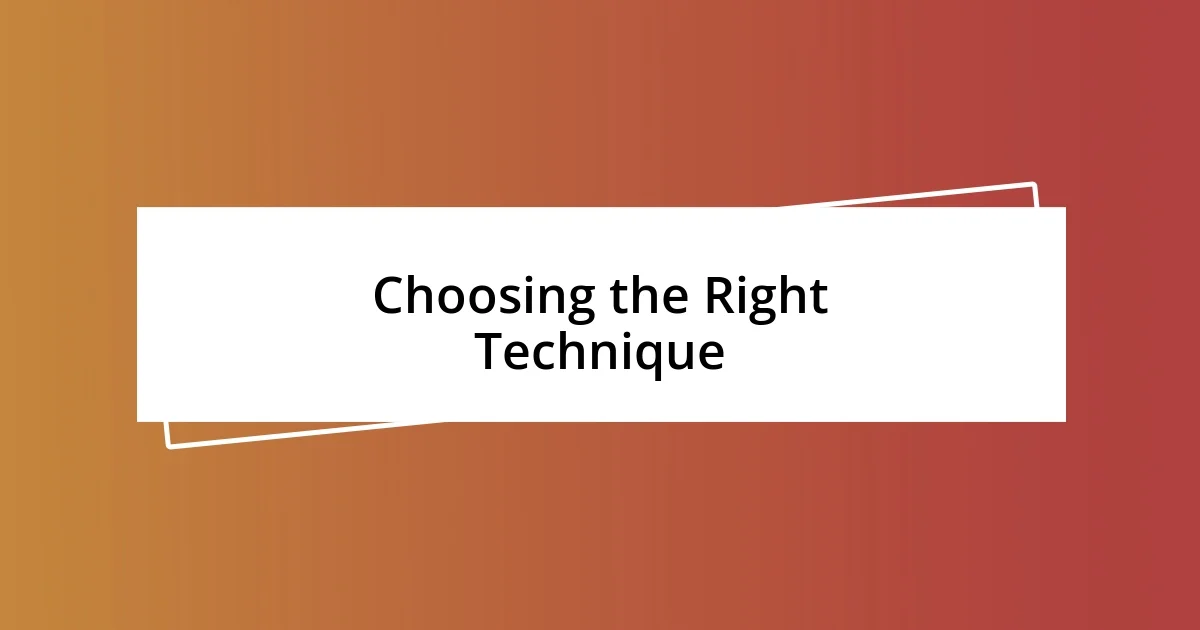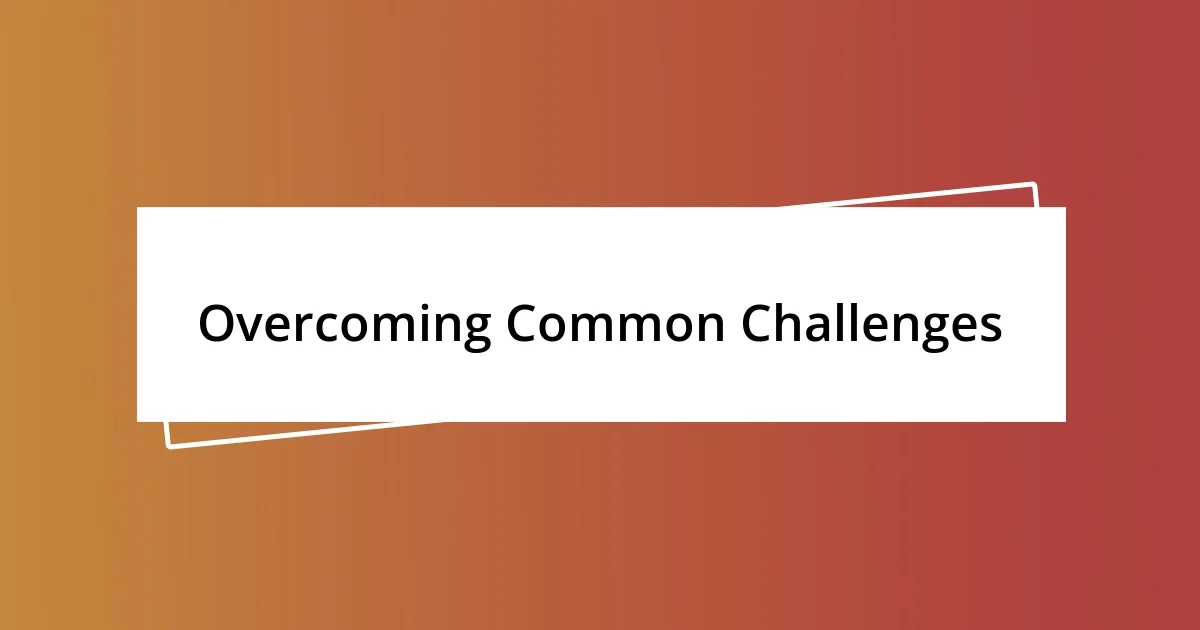Key takeaways:
- Meditation significantly reduces stress and improves focus, fostering clarity and productivity.
- Choosing the right technique and personalizing the practice are essential for a fulfilling meditation experience.
- Tracking progress and insights enhances motivation, revealing emotional patterns and the benefits of meditation over time.

Understanding Meditation Benefits
Meditation offers a treasure trove of benefits that can be both profound and subtle. Personally, I’ve found that it helps quiet my racing mind, allowing me to experience moments of clarity that I didn’t know were possible. Have you ever noticed how, in those still moments, you can hear your thoughts more clearly?
One of the most significant advantages I’ve felt from meditation is a marked reduction in stress. After just a few minutes of focused breathing, I’ve been able to dissolve feelings of overwhelm and tension. It’s fascinating how dedicating even a small amount of time to mindfulness can create such a shift in my emotional landscape, don’t you think?
Additionally, many studies suggest meditation can improve focus and concentration. I remember when I first tried to meditate; I struggled to sit still, but over time, I noticed I could focus for longer periods in my daily tasks. It’s almost as if meditation rewired my brain for better efficiency, enhancing both my productivity and my peace of mind.

Choosing the Right Technique
Choosing the right technique in meditation is crucial for a fulfilling practice. Personally, I’ve experimented with various approaches, from guided meditations to mindfulness breathing, finding that different techniques resonate at different times in my life. For example, on particularly stressful days, I tend to gravitate towards guided sessions that offer soothing narratives, which provide me with a comforting structure as I navigate my emotions.
It’s fascinating how one can feel so different about techniques based on mood and circumstance. There were days when my mind was racing with thoughts; in those moments, practicing loving-kindness meditation transformed my anxiety into compassion, not only for myself but for others too. Have you ever found that a technique you initially dismissed suddenly feels just right when you’re experiencing a certain emotion? I certainly have!
As I reflect on what works best for me, I recognize the importance of flexibility in my meditation practice. Sometimes, I’ll choose a technique simply because it feels accessible that day. What I’ve learned is that no matter the method—be it body scan, mantra repetition, or visualizations—what truly matters is that it fits your current state of being. This adaptability has helped me deepen my connection to meditation, allowing me to explore my inner world more authentically.
| Technique | Description |
|---|---|
| Guided Meditation | A meditation led by an instructor, often featuring calming narratives. |
| Mindfulness Breathing | Focusing attention on the breath to cultivate awareness. |
| Loving-Kindness Meditation | Practicing self-love and compassion towards oneself and others. |
| Body Scan | A technique that involves mentally scanning the body for tension or discomfort. |
| Mantra Repetition | Silently repeating a phrase to help focus the mind. |

Building a Consistent Practice
Building a consistent meditation practice has been a transformative journey for me, filled with moments of both challenge and revelation. In the beginning, creating a routine felt daunting. I remember sometimes staring at my cushion, feeling a mix of anticipation and anxiety. But over time, I realized that setting a specific time each day helped turn meditation into a cherished ritual rather than a chore.
To enhance consistency, consider these practices:
- Set a specific time: Choose a time that feels natural for your schedule, whether it’s morning or evening.
- Create a meditation space: Designate a corner in your home that invites serenity, perhaps with a cushion, candles, or calming scents.
- Keep it short: Start with just five minutes. It’s less overwhelming and allows for gradual increase.
- Use reminders: Schedule notifications or set an alarm as gentle prompts to carve out your meditation time.
- Track your progress: Note down your experiences. Reflecting on your journey can boost motivation and help you see how far you’ve come.
As I embraced these strategies, I gradually found myself looking forward to those moments of stillness. On days when life felt chaotic, I discovered that just closing my eyes and taking a few deep breaths, even if I couldn’t sit long, was enough to anchor my day. It’s amazing how consistency can breed comfort and reassurance, allowing meditation to become a refuge amidst life’s inevitable ups and downs.

Creating a Supportive Environment
Creating a supportive environment for meditation can profoundly influence your practice. I’ve found that the ambiance in which I meditate can make or break the experience. One evening, I attempted to meditate in my living room while the TV blared in the background; it was nearly impossible to focus. Have you ever tried to meditate in a distracting environment and felt your thoughts scatter like leaves in the wind? Making the effort to find a quiet space, perhaps a cozy corner of your home, transformed my sessions into much more serene experiences.
Lighting is another significant factor that I often overlook. Initially, I would just plop down anywhere, but changing the lighting made a considerable difference. During a particularly reflective afternoon, I dimmed the lights and lit a calming candle, which created an inviting cocoon that I could sink into. Each flicker of the candle flame became a gentle reminder to release my worries. Have you experienced how a simple shift in lighting can elevate your mood? It’s these little adjustments that turn your meditation spot into a sanctuary.
Additionally, surrounding yourself with elements that inspire tranquility can be incredibly grounding. I started incorporating meaningful items like crystals and artwork that resonate with my journey. One day, as I sat with my favorite stone—a smooth piece of amethyst—I realized how much it helps me feel connected to a deeper state of calm. Could your environment be part of your meditation toolset? By creating a space that reflects your personal vibe, you not only enhance your practice but also invite a sense of belonging and peace into your life.

Overcoming Common Challenges
Overcoming distractions during meditation is a common hurdle many face. I recall one particular week when my mind danced around every little noise, from the ticking clock to my neighbor’s dog barking. It was maddening! To counter this, I learned to embrace the distractions instead of fighting them. Now, whenever I notice a sound pulling me away, I gently acknowledge it and return to my breath. This shift in perspective has turned potential interruptions into moments of practice.
Another challenge is dealing with the incessant stream of thoughts. I remember the frustration I felt in those early days when I’d sit expectantly, only to find my mind racing with to-do lists and random memories. It often left me feeling defeated, yet I discovered a technique that truly changed the game: labeling my thoughts. When a thought arises, I simply acknowledge it by saying “thinking” in my mind, then return to my focus. This simple act not only eased my frustration but also reminded me that it’s perfectly normal for the mind to wander—it’s part of the journey.
Sometimes, emotional upheaval can also make meditation feel overwhelming. I’ve had days when I’d sit down only to be swamped by sadness or anxiety, wondering if I should even attempt to meditate. Those feelings, however uncomfortable, can actually be powerful guides. I learned to approach these emotions with curiosity; rather than pushing them away, I began to explore them gently during meditation. This practice has deepened my understanding of myself and transformed what once felt like a barrier into an opportunity for healing. Have you ever thought of your emotions as teachers on your meditation journey? They certainly have been for me.

Personalizing Your Meditation Routine
Personalizing your meditation routine is essential for making the practice resonate with who you are. I remember when I started, I followed a structured routine, thinking it was the only way. But then, I decided to experiment with different techniques, like guided meditations and silent sits. Suddenly, I found what worked best—embracing the blend of structure and flexibility allowed me to feel more connected to my practice. Have you dug into the depths of your preferences to uncover your unique rhythm?
One day, I stumbled upon sound meditations filled with soothing music and nature sounds, and it felt like discovering a hidden treasure. Incorporating sound has transformed my routine, adding layers of depth and relaxation I didn’t know I needed. Just last week, I had the opportunity to meditate with Tibetan bowls playing in the background, and it transported me to a state of bliss I hadn’t experienced before. How does sound interact with your meditation experience? Exploring various audio styles could enhance your journey.
Another way I’ve personalized my routine is by adjusting the duration of my sessions. Initially, I thought I needed to commit to a strict 30 minutes. But.
one evening, I discovered that a quick 10-minute session after lunch refreshed my mind for the rest of the day. This flexibility has taught me that meditation doesn’t have to be one-size-fits-all; it can adapt to my needs and energy levels in any moment. Have you given yourself permission to experiment with time? Finding your sweet spot can be a game changer in how you connect during meditation.

Tracking Your Progress and Insights
Tracking progress in meditation is more than just marking days on a calendar; it’s about reflecting on how each session has impacted my life. I’ve kept a simple journal where I note my feelings and any insights after each meditation. This practice has illuminated patterns, helping me see that some emotional breakthroughs were preceded by particularly restless sessions. Have you considered documenting your journey? You might be surprised by the wisdom that unfolds when you look back.
Every few weeks, I revisit my notes to assess my overall well-being. I remember one time when I noticed a trend: after a week of focusing on gratitude in my meditation, my mood noticeably brightened. It was as if the practice had a ripple effect, enhancing my perspective on daily challenges. This kind of insight reinforces my commitment to meditation, reminding me that each moment spent in stillness contributes to my growth. What insights might you discover by tracking your own reflections?
Integrating progress tracking into my routine has also afforded me the opportunity to celebrate small wins. Last month, I marked a particularly challenging week where I managed to meditate daily amid life’s chaos. That felt monumental! Acknowledging these victories, no matter how small, fosters motivation and keeps me engaged. How do you celebrate your progress? Recognizing achievements can transform your meditation practice into a rewarding journey, instead of a checklist.













